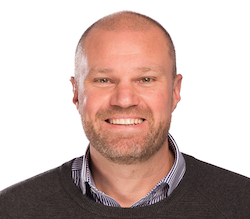 Full fibre will be the overarching story of 2023 and beyond, overshadowing many other industry themes, according to panelists on last month’s Comms Dealer Insight Session. But striking a balance between optimism and adoption remains a significant focus with the drive for effective marketing, among other determining factors, key to increased take up.
Full fibre will be the overarching story of 2023 and beyond, overshadowing many other industry themes, according to panelists on last month’s Comms Dealer Insight Session. But striking a balance between optimism and adoption remains a significant focus with the drive for effective marketing, among other determining factors, key to increased take up.
 The Insight Session proved to be a good indicator of how the full fibre landscape is evolving and revealed that optimism is high among the key players. Their key message? It’s time to accelerate your full fibre ambitions. So what’s in store for the channel, and how can partners maximise this important growth prospect? Paul North (pictured left), Head of Channel, Giganet, explained how a no frills on the ground marketing strategy can deliver success for altnets and ISPs. “Those proactive partners who are committing time, energy and focus to understanding this opportunity are the ones seeing success,” he said. “Their activities include good old fashioned canvassing, door knocking, getting out there and seeing people at street level. Many altnets have great community ambassadors that raise awareness, and the partners tapping into that are seeing serious success.”
The Insight Session proved to be a good indicator of how the full fibre landscape is evolving and revealed that optimism is high among the key players. Their key message? It’s time to accelerate your full fibre ambitions. So what’s in store for the channel, and how can partners maximise this important growth prospect? Paul North (pictured left), Head of Channel, Giganet, explained how a no frills on the ground marketing strategy can deliver success for altnets and ISPs. “Those proactive partners who are committing time, energy and focus to understanding this opportunity are the ones seeing success,” he said. “Their activities include good old fashioned canvassing, door knocking, getting out there and seeing people at street level. Many altnets have great community ambassadors that raise awareness, and the partners tapping into that are seeing serious success.”
 Our panelists anticipate unprecedented growth during the remainder of the year and beyond. But perhaps surprisingly, one of the most significant marketing interventions is based on a word of mouth powered approach. Matt Baker (pictured left), Head of Wholesale, FullFibre, commented: “After a partner’s first sale in a particular street you can see the neighbours coming days or weeks later. It really is word of mouth contributing to the marketing done by ISPs. You also see feedback on group chats. It’s easy to focus on the bandwidth and price points but it’s also about the service experience, the migration, the risk of change and word of mouth is key to this.”
Our panelists anticipate unprecedented growth during the remainder of the year and beyond. But perhaps surprisingly, one of the most significant marketing interventions is based on a word of mouth powered approach. Matt Baker (pictured left), Head of Wholesale, FullFibre, commented: “After a partner’s first sale in a particular street you can see the neighbours coming days or weeks later. It really is word of mouth contributing to the marketing done by ISPs. You also see feedback on group chats. It’s easy to focus on the bandwidth and price points but it’s also about the service experience, the migration, the risk of change and word of mouth is key to this.”
Adaptability
A successful approach is also about being more agile in marketing, which leads to built-in resilience when word of mouth takes hold, enabling users to make full fibre decisions with greater confidence. Ultimately, with the right combination of nuts and bolts customer engagement fibre providers are able to build trust, cement their reputation, gain a competitive advantage and move faster.
This really is the year to grab the opportunity. Properties are being passed at a rate of knots and it’s a gold mine. Collectively we are all doing a great job at raising awareness
 Dan Ramsay (pictured left), CMO, CityFibre, added: “2023 will be the biggest year ever and next year even bigger as the technology roll out grows and awareness among businesses and consumers continues to accelerate. The most powerful marketing is always word of mouth and this will increasingly become the norm as the roll out matures. We see the snowball effect where you reach a critical mass in a particular town, city or region and it sustains itself without too much of an extra nudge. It’s only going in one direction.”
Dan Ramsay (pictured left), CMO, CityFibre, added: “2023 will be the biggest year ever and next year even bigger as the technology roll out grows and awareness among businesses and consumers continues to accelerate. The most powerful marketing is always word of mouth and this will increasingly become the norm as the roll out matures. We see the snowball effect where you reach a critical mass in a particular town, city or region and it sustains itself without too much of an extra nudge. It’s only going in one direction.”
Ramsay also noted that marketing pays off more when tailored to different user groups but predicting where the future is going to take consumers and businesses is more difficult. “There are many hypothesis about where the metaverse is going but I don’t think anyone does not believe that it won’t happen in some guise,” he added. “The bandwidth demands will be infinitely greater than what we see today. It’s going to happen so let’s get ahead of it.”
 Despite the importance of full fibre adoption it remains the case that barriers to take up still exist. Nick Tiddy (pictured left), Head of Business Development, Zen, observed: “We’re still seeing mixed perceptions around the urgency of a fibre strategy. Zen is playing its part in terms of webinars and intelligence sharing; and we’re looking at a stop-sell in our partner division in late July or early August to get ahead of the September stop-sell.”
Despite the importance of full fibre adoption it remains the case that barriers to take up still exist. Nick Tiddy (pictured left), Head of Business Development, Zen, observed: “We’re still seeing mixed perceptions around the urgency of a fibre strategy. Zen is playing its part in terms of webinars and intelligence sharing; and we’re looking at a stop-sell in our partner division in late July or early August to get ahead of the September stop-sell.”
Full fibre acceleration presents a particular challenge to slow moving CPs and that’s an advantage not to be missed by the more agile and proactive go-getters. Inaction and inertia is a significant threat, leaving certain partners and their bases exposed. “We have to be consistent with the message that this is happening and emphasise the urgency for partners to be ahead before the competition moves in,” added Tiddy. “We are seeing most success where partners have grasped the urgency with a first past the post mindset. Those partners want to discuss bespoke commercial deals that give them a competitive advantage, focusing on a fibre-first approach and then differentiating through their own value add.”
Contract matters
However, new technology adoption can take more time if barriers exist and Baker is acutely aware of one pressing challenge facing the industry. “The main barriers we see are people still in contract on their legacy infrastructure and the complexity of moving them when they are out of contract,” he said. “With mobile phones it’s relatively easy and seamless – that’s lacking in our industry. This raises some key questions: Are the national players creating a barrier to people moving to better technology? Should they re-sign for up to two years if there is a risk that the property will be switched off? Is there going to be a get-out-of-contract option if you can get FTTP and your comms is being switched off?”
It’s easy to focus on the bandwidth and price points but it’s also about the service experience, the migration, the risk of change – and word of mouth is key to this
Closer industry collaboration would no doubt help the industry to meet these challenges and also Openreach’s 2025 PSTN shutdown deadline which straight off the bat hit a problem when the two pilot areas were delayed from April to October this year. “The Salisbury and Mildenhall delays aren’t a sign of indecision,” stated Tiddy. “This is more a change of tack, a softer approach to drive and influence behaviour, driving the end user to speak to their service provider. But service providers like ourselves must be ready for the conversation. There are some parties that aren’t as far down that journey as they could be. A sensible approach is to challenge the inertia.”
The postponements do not mean that the industry can hit pause when it comes to increasing the pace of all-IP proliferation, and North provided some insight that may prove telling in the long run. “Salisbury is the first exchange we unbundled with Openreach and our experience there has been good,” he added. “Take up is strong. And Salisbury has an older demographic so we were surprised by the adoption rate. But it is likely that the 2025 deadline will be stretched out.”
The wholesale question
In terms of driving greater full fibre take up, Baker is surprised that more altnets have not gone wholesale because of that adoption challenge and the fact that people don’t want two or three poles serving one street. “It’s costly,” he stated. “We’ve built in areas where there wasn’t an altnet so it was either us or the incumbent. Overbuild doesn’t make sense for the consumer or the market.”
The most powerful marketing is always word of mouth and this will increasingly become the norm as the roll out matures in different parts of the UK
North cited the idea that having multiple providers could be good for customers and drive competition. “But it’s probably more important that altnets wholesale their infrastructure which gives more choice of ISP, creating competition and better value for the consumer without the disruption of roads being dug up by different altnets,” he added. “We’ll see more consolidation this year and more altnets open up to wholesale. This really is the year to grab the opportunity. Properties are being passed at a rate of knots and it’s a gold mine. Collectively we are all doing a great job at raising awareness.”
It is clear that one of the most decisive issues facing the comms channel is full fibre adoption and the evolution of the fibre provider space, not least because a failure to respond could compromise the strategies of both altnets and CPs. Furthermore, future success is not just about striking the right balance between optimism and adoption, it’s also about striking while the iron is hot this year.
“We’ll see much steeper growth as the roll out reaches such scale that it’s the norm,” said Ramsay. “It just takes a while to creep into the consumer’s consciousness. It’s similar to electric cars – more people are buying them now than three years ago.”
More insights..
Talk to customers about how full fibre is future proof and how the switch off is going to impact them. The recipe for success is clear.
Dan Ramsay, Chief Marketing Officer, CityFibre
Demand is increasing but we need to make sure it’s easier for end users to move to better technology.
Matt Baker, Head of Wholesale, FullFibre
There is still the ‘so what’ factor prevailing outside of the industry. However, this dormancy in the market will be catalysed by the 2025 deadline.
Nick Tiddy, Head of Business Development, Zen
We have to pass the early stage adopters and technology enthusiasts who grab the bull by the horns as soon as it’s available.
Paul North, Head of Channel, Giganet
We measure the level of switching in our network areas and it’s many times the national average.
Dan Ramsay, Chief Marketing Officer, CityFibre
A battleground is the correct analogy and partners have got to get to conversations with their clients first.
Nick Tiddy, Head of Business Development, Zen
It’s incredibly important to tailor marketing approaches.
Paul North, Head of Channel, Giganet
This year we’ll see more consolidation and more people going down the wholesale route.
Matt Baker, Head of Wholesale, FullFibre
